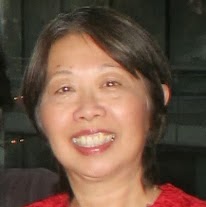
Loved by many for its strength & courage, endurance, speed & grace, the horse has been celebrated in art & literature since the beginning of time. Civilizations advanced with the help of horses & these noble animals continue to fascinate us.
 No wonder the horse is a favourite subject among artists. One master stood tall in this regard. He is the Chinese artist, Xu Beihong, also known as Hsü Pei-hung, or Ju Péon. His dynamic ink paintings of horses are widely recognized by Chinese audiences.
No wonder the horse is a favourite subject among artists. One master stood tall in this regard. He is the Chinese artist, Xu Beihong, also known as Hsü Pei-hung, or Ju Péon. His dynamic ink paintings of horses are widely recognized by Chinese audiences.Galloping Horse, Xu Beihong, ink on paper, 1950.
With manes flying, powerful necks & legs straining, Xu Beihong's galloping horses come alive in front of you.
Beihong excelled at both oils & traditional Chinese ink. He integrated the ancient & modern, sought to combine Chinese brush & ink techniques with Western realism, perspective foreshortening & composition. His other subject matter included figures & portraits, birds & animals, plants & landscapes.
 Horse Grooming, Xu Beihong, ink on paper, 1943.
Horse Grooming, Xu Beihong, ink on paper, 1943.Or, Beihong painted his horses resting, quietly grazing or grooming, infusing them with grace & intelligence.
Xu Beihong was born in Yixing County, Jiangsu Province, on July 19, 1895. At age 9, he started to learn Chinese painting. In 1919, on a Chinese government scholarship, he studied in Paris, France, at the École Nationale Supérieure des Beaux-Arts. He learned the European manner of realistic oil painting & devoted many long hours sketching & studying the masterpieces in the museums of France, Berlin, Brussels, Italy & Switzerland. Rembrandt & Rubens were favourites. He spent 8 years abroad, during which time he had acquired a wide knowledge of art.
In 1933 he was invited by the French National Art Gallery in Paris to organize a Chinese art exhibition. The French government bought 12 traditional Chinese paintings, including works by Beihong, Qi Baishi & Gao Qifeng. Additional invites came from Italy, Belgium, Berlin, Moscow & Leningrad.
In 1949 he became president of the Central Academy of Fine Arts in Beijing & was elected chairman of the National Union of Chinese Artists.
At the age of 58, Xu Beihong died of a stroke on September 26, 1953. His former residence in Beijing was converted into the Xu Beihong Museum. He left over 1,200 of his own works. By saving on his food & clothing, he had built an extensive collection & library of over 10,000 volumes on Chinese & foreign art, as well as over 1,200 other paintings & calligraphy from the Tang, Song, Yuan, Ming & Qing Dynasties & of modern times.
Through Xu Beihong's efforts, new audiences & art museums abroad became familiar with Chinese art; as well, he had worked hard to advance Chinese painting within China.
Click here to see more of this artist's other Chinese paintings on Xu Beihong, Part II.
References:
Album of Xu Beihong Paintings. Beijing: Rong Bao Bian (Chinese), 1990.
Paintings by Xu Beihong, Vol. 1. Compiled by Xu Beihong Museum & Beijing Publishing House. Beijing: Beijing Publishing House, 1979.
To see also my commentary on Chinese artist Wu Changshuo, click here.

吳昌碩
Take a look and enjoy these videos with my posts:
Victoria and Albert Museum, London, England & video
Damien Hirst & video
Pablo Picasso & video
Monet's Garden at Giverny & video
Vincent van Gogh Said ... & video
Robert Motherwell Bio & video
Major Cézanne Exhibit & video




